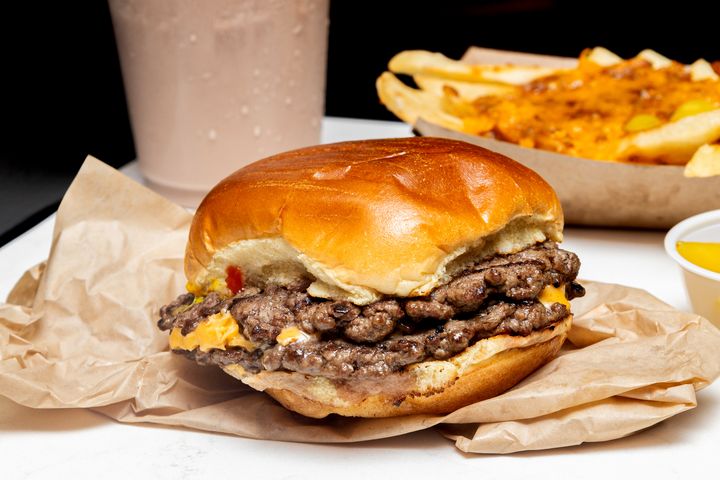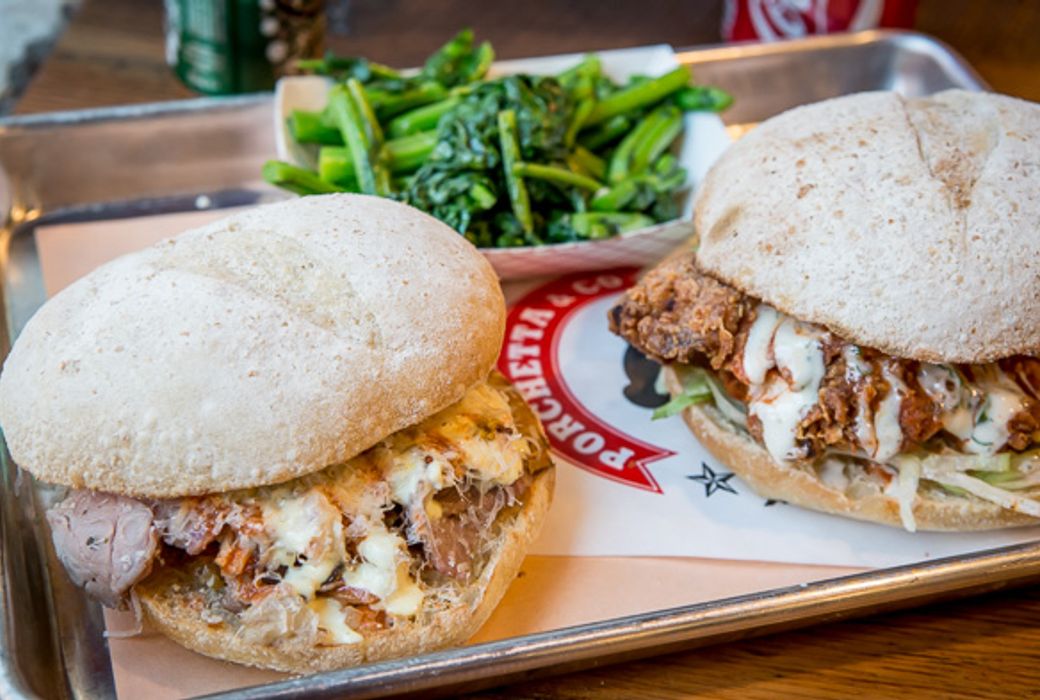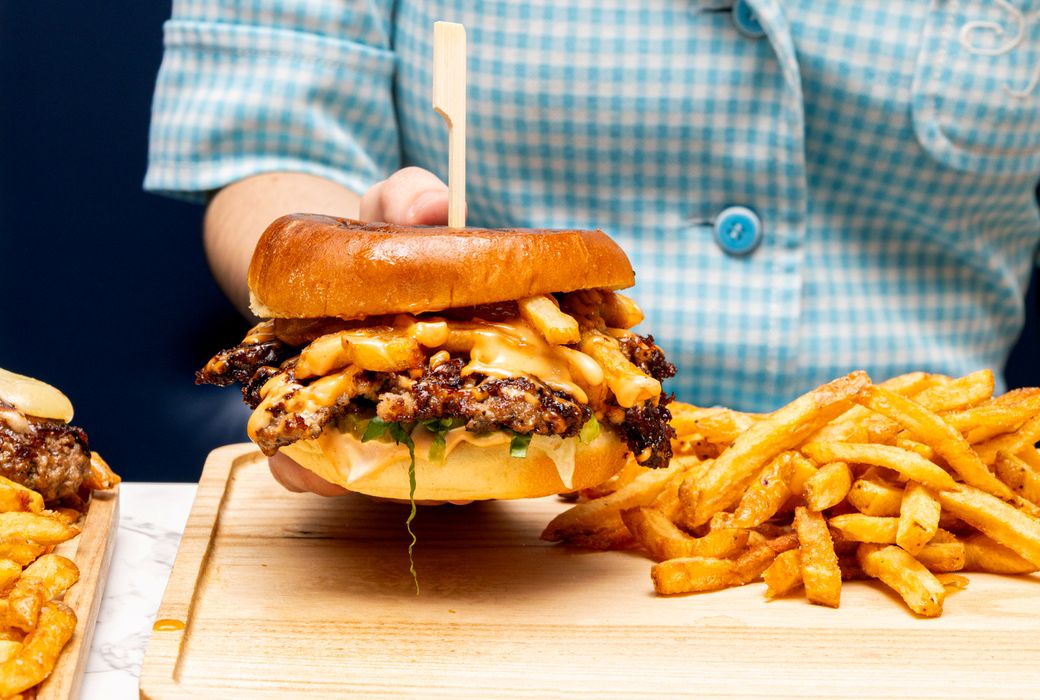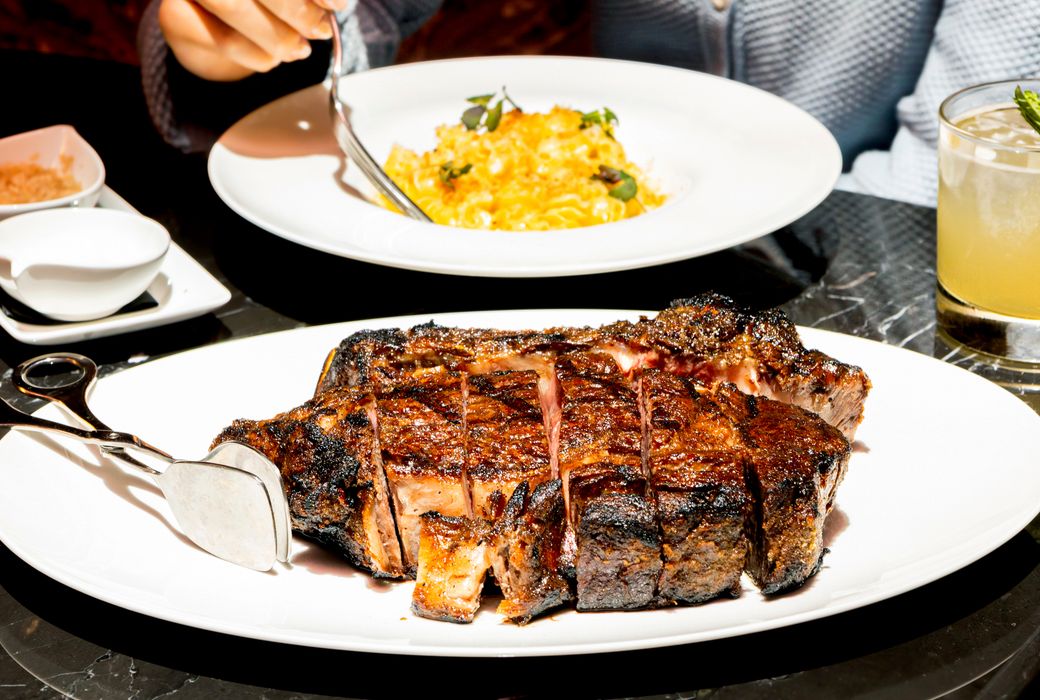Hot Pork
Hot Pork is a casual restaurant near Trinity Bellwoods Park specializing in sandwiches and home-made meat products that you can't find elsewhere else.
A former chef at the King Edward Hotel, Michael Synowicki's entrepreneurial adventures began on social media during the pandemic, where he sold house-smoked sausages in nearly 20 flavour varieties and later on added pork and beef brisket to his offerings.
Before stepping into the fast-casual food scene, Michael found his foothold at the Junction Farmers Market, where he introduced his famous breakfast burgers, and gained loyal followers that eventually stimulated the creation of Hot Pork.
The clean and bright space on Dundas West that opened in January of 2024 is reminiscent of an old-school greasy spoon diner.
Hot Pork's menu focuses on freshly prepared meats and proteins, incorporating them into a variety of breakfast and lunch sandwich combinations.
The minimal menu evokes a warmth of home-made meals shared with friends and family.
To accommodate diverse dietary preferences, vegetarian choices and gluten-free buns are available as well. Additionally, you can complete your meal by adding fries aside ($5).
Potentially Chef Michael and Hot Pork's most renowned creation, the Smoked Beef Brisket sandwich ($13) is comprised of a fried egg and two slices of juicy beef brisket.
Though its flour-coated exterior may appear slightly dry, the runny egg and flavour-packed meat boasts a firm, chewy texture, and a subtle smoky flavor. I'd suggest the add-on of Hollandaise sauce ($2) to elevate the overall creaminess.
Distinguished by a homestyle Pork Sausage Patty ($9), this classic breakfast item includes a fried egg, cheese, mayo, and hot sauce sandwiched between toasted English muffins.
A slight take on a traditional breakfast sandwich, it's perfectly seasoned for just the right balance of flavors, without being overwhelmingly spicy.For those looking for something lighter, Hot Pork's zesty Citrus-cured Salmon ($12) bagel ensures a silky and refreshing experience with each bite.
Surpassing the taste of regular smoked salmon options, this choice has a much gentler flavour profile in comparison to the typically loud smoked salmon you find at most establishments.
Packed with a fresh tabouli salad and zingy lemon tahini dressing, this vegan Za’atar Fried Cauliflower ($12) "burger" is my favourite.
It truly manages to rival traditional protein alternatives, thanks to its meaty and flavorful cauliflower steak.A unique Asian-twist to their pork sausage burger, opt for their Red Thai Curry ($12) offering. It comes with a juicy pork patty, sweet green mango slaw, crisp red onion and bell pepper slices.
Besides the breakfast and lunch menu, Hot Pork also has a selection of take-home goods such as their handcrafted Maltese sausage ($12) and Citrus-cured salmon ($12).
What piqued my interest are these preservative-free pickled treats, particularly the eye-catching Spicy Pickled Eggs ($12).
The inclusion of red wine vinegar and bonnet pepper imparts a beautiful garnet red color to this jar, giving the eggs a gradually intensifying fiery kick.
So whether you're looking to grab a quick and affordable lunch in the area, or are yearning to sniff out artisanal ingredients for your own at-home sandwich creations, Hot Pork is quickly cementing itself as a go-to.
Hot Pork is located at 932 Dundas St W.
Fareen Karim









